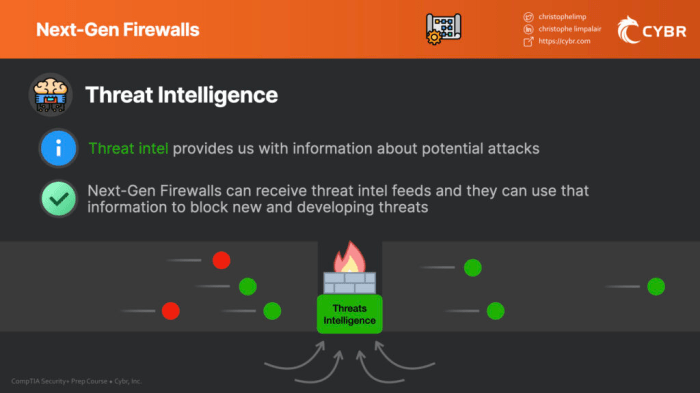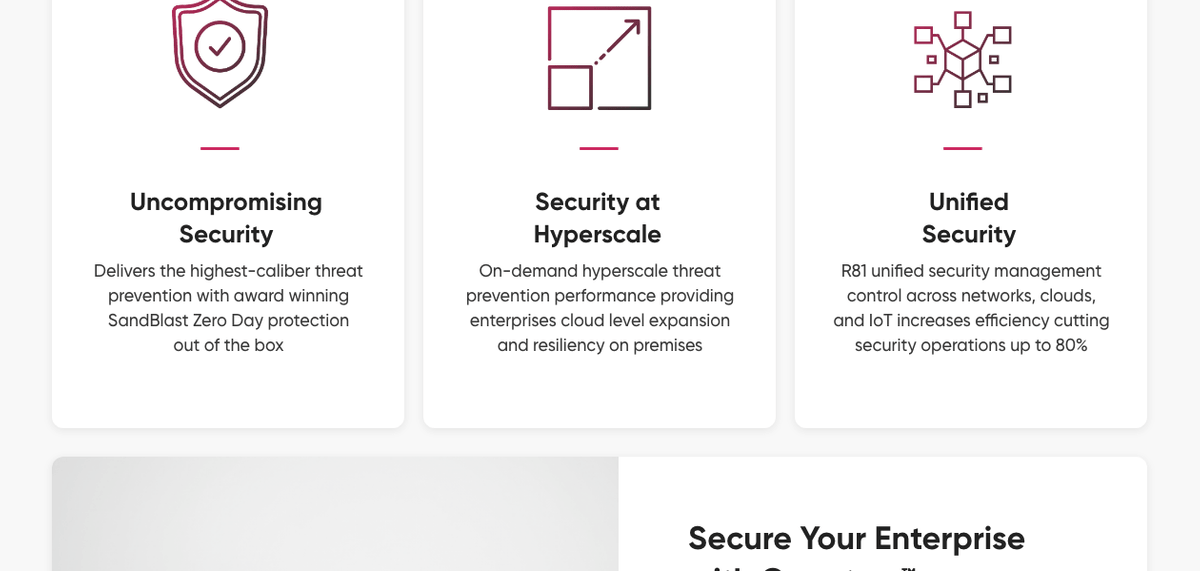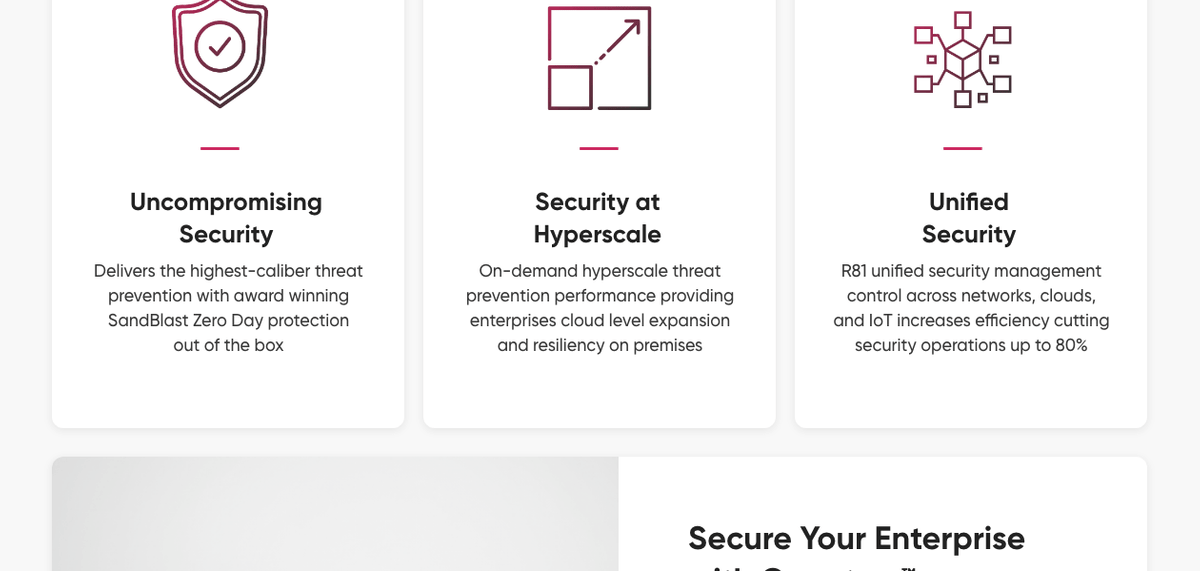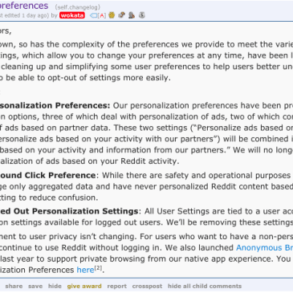Privacy AIOps for NGFWs is a crucial area demanding attention. Modern network security relies heavily on AIOps for efficient threat detection and response, but this raises critical privacy concerns. This exploration delves into the complexities of balancing the need for robust AIOps with the protection of sensitive data within Next-Generation Firewalls (NGFWs). We’ll examine data collection methods, privacy-enhancing techniques, and essential compliance policies to ensure responsible and secure AIOps implementations.
AIOps systems, by their nature, collect and analyze vast quantities of network data. This data often includes personally identifiable information (PII) and other sensitive information, making privacy a paramount concern. This post will address the key challenges, present practical solutions, and discuss potential future directions for privacy-preserving AIOps in NGFWs.
Introduction to Privacy in AIOps for NGFWs
Artificial Intelligence for Operations (AIOps) is rapidly transforming network security management. By leveraging machine learning algorithms, AIOps systems analyze vast quantities of network data to identify anomalies, predict potential threats, and automate security responses in Next-Generation Firewalls (NGFWs). This automation enhances the efficiency and effectiveness of security operations, enabling faster threat detection and mitigation.However, the very data that powers this enhanced security presents a significant challenge: maintaining user privacy.
AIOps systems often process sensitive user activity logs, metadata, and connection details. Balancing the need for comprehensive security intelligence with the protection of user privacy is a critical consideration in deploying AIOps for NGFWs.
Privacy Considerations in Network Security Data
Effective network security relies on comprehensive data analysis. This data, encompassing user activity, connection details, and metadata, is often sensitive and requires careful handling to ensure user privacy. The sheer volume and velocity of this data make it a prime target for AIOps systems.
Challenges in Balancing Privacy with AIOps
A significant challenge lies in ensuring that AIOps systems operate efficiently while respecting user privacy. This involves developing and implementing robust data anonymization and masking techniques. Furthermore, the development of privacy-preserving machine learning algorithms is crucial to avoid potential biases and discriminatory outcomes.
Sensitive Data Processed by AIOps Systems
AIOps systems in NGFW environments often process various types of sensitive data. These include:
- User Activity Logs: These logs record user login attempts, access patterns, and file transfers. These logs can reveal sensitive information about an individual’s online activities.
- Metadata: Metadata includes details like timestamps, locations, and types of network connections. This information, when combined with other data points, could potentially reveal personally identifiable information (PII).
- Connection Details: These details encompass IP addresses, ports, and protocols used during network communication. While not always directly PII, these details can be correlated with other information to reveal sensitive user activity.
Privacy Risks Associated with AIOps Deployments
Several potential privacy risks are associated with AIOps deployments in NGFWs:
- Data Breaches: AIOps systems, like any other system handling sensitive data, are susceptible to data breaches. Compromised systems could expose large amounts of user data, leading to significant privacy violations.
- Unintentional Data Leaks: Insufficient anonymization or masking procedures can lead to unintentional data leaks. This occurs when sensitive data, even in anonymized form, can be linked back to specific users.
- Bias in Machine Learning Algorithms: AIOps systems often rely on machine learning algorithms. If these algorithms are trained on biased data, they can perpetuate and amplify existing societal biases, potentially discriminating against certain user groups.
Addressing Privacy Concerns
Implementing robust data anonymization and masking techniques, coupled with the development of privacy-preserving machine learning algorithms, are essential steps in mitigating these risks. Thorough security audits, compliance with relevant regulations (like GDPR), and clear data handling policies are also critical components of a comprehensive privacy strategy. Furthermore, transparent communication with users about data collection and usage practices is crucial to build trust and transparency.
Privacy-Preserving Data Collection Methods for AIOps in NGFWs
Protecting user privacy is paramount when deploying AIOps in network security systems like NGFWs. Data collected from network traffic can contain sensitive information, and careful consideration must be given to how this data is collected, stored, and utilized. This involves implementing robust data minimization techniques, anonymization strategies, and strong access controls to safeguard user privacy.
Data Minimization Techniques for AIOps Data Collection
Data minimization is crucial for privacy-preserving AIOps. It involves collecting only the necessary data required for the specific analysis tasks. This approach reduces the risk of storing and processing unnecessary information that could potentially expose sensitive data. Carefully defining the scope of data collection and selecting appropriate data fields are key elements of a data minimization strategy.
For example, instead of collecting full user browsing history, only the IP addresses and timestamps associated with suspicious activity could be logged. This significantly reduces the amount of data collected while still providing valuable insights for AIOps analysis.
Privacy AIOps for next-generation firewalls (NGFWs) is a hot topic right now, and it’s all about ensuring data security. It’s fascinating how these systems analyze network traffic to identify potential threats, but the debates around these technologies often miss the broader picture. For instance, the recent fuss over the 1-cent coin, as highlighted in the article trump puts the penny on notice the fuss over our 1 cent coin , shows how seemingly small things can cause big discussions.
Ultimately, these debates should remind us to keep a sharp eye on the bigger picture of security when dealing with complex systems like privacy AIOps for NGFWs.
Anonymization and Pseudonymization Methods
Anonymization and pseudonymization are important techniques for transforming data to protect user privacy. Anonymization replaces identifying information with non-identifiable values, making it impossible to link the data back to a specific individual. Pseudonymization, on the other hand, replaces identifying information with pseudonyms, allowing for potential re-identification if needed for specific use cases.
Methods for Limiting the Collection of Personally Identifiable Information (PII)
Limiting the collection of PII is vital for privacy protection. This involves identifying and excluding personally identifiable information (PII) from data collection. Examples of PII include user names, email addresses, and IP addresses associated with specific users. Careful data mapping and field selection are essential to ensure that PII is not inadvertently collected and stored. For instance, only storing the anonymized user IDs or session IDs instead of the actual user names will significantly reduce the risk of PII exposure.
System Architecture for Secure Data Collection and Storage, Privacy aiops for ngfw
A robust system architecture is needed to ensure the secure collection and storage of network data relevant to AIOps. The architecture should include secure data ingestion pipelines that protect data from unauthorized access. Encryption at rest and in transit is a critical security measure. Storing the data in secure and isolated data repositories with appropriate access controls is also essential.
Using a zero-trust model, where access is granted only on a need-to-know basis, is an effective way to minimize risks.
Data Governance and Access Control within the AIOps Framework
Data governance and access control are critical aspects of a privacy-preserving AIOps framework. Establish clear data ownership, usage policies, and retention schedules. Implement role-based access control (RBAC) to limit access to sensitive data based on user roles and responsibilities. Regular audits and reviews of data governance policies are crucial to ensure compliance with privacy regulations and best practices.
This involves creating a comprehensive data inventory, including details about the data collected, how it’s used, and who has access to it. Having clear procedures for data deletion and purging also contributes to maintaining privacy.
Privacy-Enhancing Techniques in AIOps for NGFWs
Protecting user privacy while leveraging the power of AIOps for network security is paramount. This necessitates the implementation of robust privacy-enhancing techniques. These techniques safeguard sensitive data while enabling valuable insights from network security data, fostering a balance between security and privacy.Differential privacy, federated learning, and secure multi-party computation are crucial components in building a privacy-respecting AIOps system for next-generation firewalls (NGFWs).
These methods allow us to analyze network data without compromising individual user information. Data encryption and secure transfer protocols ensure the confidentiality and integrity of data throughout the AIOps pipeline.
Differential Privacy in Network Security Data Analysis
Differential privacy is a powerful technique for adding noise to data analysis results, effectively obscuring individual user information while retaining valuable aggregate insights. This method allows us to derive statistical patterns from network data without revealing the specifics of individual user activity.By introducing carefully calibrated noise, differential privacy ensures that the output of queries on the data remain meaningful, while making it computationally infeasible to infer sensitive information about individual users.
This is especially relevant for NGFWs, where individual user activity can be highly sensitive and contain potentially revealing information about their behavior.For example, if an AIOps system tracks network traffic volume, differential privacy can add carefully controlled noise to the reported traffic volume for each user, preventing the identification of unusually high or low traffic volumes that could potentially reveal personal information about specific user activity.
Federated Learning Approaches for Privacy-Preserving Machine Learning in AIOps
Federated learning allows multiple parties (e.g., NGFWs) to collaboratively train machine learning models without sharing their raw data. This approach is particularly valuable in AIOps, as it prevents the central collection and storage of potentially sensitive network data.Instead of collecting data from all NGFWs in a central location, models are trained locally on each device, and only model updates (aggregated information) are exchanged.
This decentralized approach greatly reduces the risk of data breaches and ensures that sensitive information never leaves the control of the individual NGFW.For instance, multiple NGFWs could train a model to detect malicious network traffic patterns without sharing the specific details of the malicious traffic on their individual networks. Only the model updates containing the general characteristics of the malicious traffic are exchanged, thus maintaining the privacy of each individual user.
Techniques for Data Encryption and Secure Data Transfer for AIOps
Robust encryption and secure data transfer are critical for protecting sensitive network data throughout the AIOps pipeline. Using industry-standard encryption protocols, such as Advanced Encryption Standard (AES), ensures that data transmitted between different components of the system remains confidential.Moreover, secure protocols like Transport Layer Security (TLS) are crucial for encrypting communication channels between NGFWs and the AIOps platform, further safeguarding the privacy of network traffic data.
Privacy AIOps for next-generation firewalls (NGFWs) is crucial, especially as user data becomes more sensitive. The recent wider rollout of Google TV profiles, as detailed in this article about google tv profiles wider rollout , highlights the need for robust privacy safeguards. Ultimately, effective privacy AIOps for NGFWs is vital to maintaining user trust and security in today’s digital landscape.
This layered approach significantly enhances the overall security posture of the system.For example, encrypting network traffic logs before they are transmitted to the AIOps platform protects the privacy of user activity data. The use of TLS ensures that the communication channel itself is secure, preventing eavesdropping and unauthorized access.
Secure Multi-Party Computation in Privacy-Preserving AIOps
Secure multi-party computation (MPC) allows multiple parties to compute a function over their private inputs without revealing those inputs. This approach is valuable in AIOps because it enables the computation of results on combined data without sharing the underlying data.MPC protocols enable tasks like joint pattern recognition, anomaly detection, and trend analysis on network traffic data without compromising the privacy of individual users’ data.
This approach is particularly useful for identifying potentially malicious actors or network anomalies.For example, several NGFWs can jointly analyze network traffic data for anomalies without disclosing the specific details of the data on their individual networks. This is achieved by securely computing the aggregate results, which may reveal broader trends and patterns without exposing individual user data.
Comparison of Privacy-Enhancing Techniques
| Technique | Strengths | Weaknesses |
|---|---|---|
| Differential Privacy | Preserves aggregate insights while protecting individual user data. Easy to implement. | May introduce some noise into analysis results. Difficult to balance noise with utility. |
| Federated Learning | Preserves data privacy by training models locally. Scalable to large networks. | May require more complex infrastructure. Model accuracy can be affected by limited local data. |
| Data Encryption & Secure Transfer | Confidentiality and integrity of data throughout the pipeline. | Requires dedicated infrastructure and expertise for secure communication. |
| Secure Multi-Party Computation | Enables computation on private inputs without revealing them. Highly secure. | Computationally expensive and can be complex to implement. |
Privacy Policies and Compliance for AIOps in NGFWs: Privacy Aiops For Ngfw

AIOps systems, particularly those integrated with Next-Generation Firewalls (NGFWs), collect and analyze vast amounts of network security data. This data, often containing sensitive information about users and their activities, necessitates stringent privacy policies and compliance measures. Robust policies and adherence to regulations are crucial to maintain trust and avoid legal repercussions.A robust privacy policy is essential for any AIOps deployment involving NGFWs.
It serves as a crucial guide for data handling practices, ensuring that sensitive information is collected, processed, and stored in a secure and compliant manner. This policy should be easily accessible to all stakeholders, including users, administrators, and regulatory bodies.
Privacy Policy Template for AIOps in NGFWs
A comprehensive privacy policy for AIOps in NGFWs should clearly Artikel the following:
- Data Collection Practices: Explicitly state what types of data are collected (e.g., user activity logs, network traffic metadata, security events). Specify the sources of the data (e.g., network devices, security tools). This includes detailed information on how the data is collected, including methods and duration.
- Data Storage and Retention: Define the duration data is retained and the security measures in place to protect it during storage. This should align with legal retention requirements and data minimization principles.
- Data Processing and Use: Explain how the collected data will be used, including specific examples of how it will support security analysis and AIOps functions. The policy should also detail who has access to the data and under what circumstances. Data minimization is critical.
- Data Subject Rights: Artikel the rights of individuals whose data is collected, such as the right to access, rectify, and erase their data (commonly referred to as the right to be forgotten). Procedures for exercising these rights should be clearly described.
- Security Measures: Detail the technical and organizational security measures implemented to protect the collected data from unauthorized access, use, disclosure, alteration, or destruction. This includes data encryption, access controls, and regular security audits.
- Contact Information: Provide a clear method for individuals to contact the organization with questions or concerns about the privacy policy or data practices.
Regulatory Compliance Requirements
Various regions have specific regulations governing the handling of network security data.
- General Data Protection Regulation (GDPR): Applicable in the European Union, GDPR mandates strict data protection measures, including data minimization, purpose limitation, and data subject rights.
- California Consumer Privacy Act (CCPA): In California, CCPA grants consumers specific rights regarding their personal information, including the right to know, delete, and opt-out of the sale of their data. It also addresses the security of personal information.
- Other Regions: Other regions, such as Brazil (LGPD), and many states in the US, have similar regulations. It is crucial to understand the specific regulations applicable to your region and ensure compliance.
Legal and Ethical Considerations
AIOps deployments in NGFWs introduce legal and ethical considerations.
- Data Minimization: Collecting only the data necessary for the specific purpose. Excessive data collection raises ethical concerns and could violate regulations.
- Transparency: Clearly communicating data collection and usage practices to users.
- Accountability: Establishing mechanisms to ensure compliance with policies and regulations.
- Bias and Fairness: Ensuring that the AIOps system does not perpetuate or amplify existing biases in data. This is critical to avoid discrimination and ensure fairness.
Data Breach Response Planning
AIOps systems need comprehensive data breach response plans.
- Incident Detection and Response: Implementing mechanisms to detect and respond quickly to data breaches. This includes notification procedures and communication strategies.
- Legal and Regulatory Compliance: Ensuring adherence to all applicable legal and regulatory requirements regarding breach notification.
- Business Continuity: Developing strategies to minimize the impact of a data breach on business operations.
Privacy Oversight Mechanisms
A dedicated privacy oversight body should be established.
- Data Protection Officer (DPO): A designated DPO can provide guidance and oversight to ensure compliance.
- Regular Audits and Reviews: Implementing regular audits and reviews of the AIOps system’s data handling practices.
- Data Governance Framework: Establishing a framework that Artikels roles, responsibilities, and processes related to data protection.
Case Studies of Privacy-Preserving AIOps in NGFWs

Privacy-preserving AIOps in network security, particularly in next-generation firewalls (NGFWs), is critical for maintaining data confidentiality and compliance. Implementing AIOps while respecting user privacy is a growing need, as data collected from network activities can contain sensitive information. This section examines real-world scenarios highlighting successful implementations, challenges, and the impact on system performance.
Successful Privacy-Preserving AIOps Implementation in a Network Security Context
A hypothetical case study involves a financial institution using an NGFW with AIOps. They implemented a system that analyzes network traffic patterns to detect anomalies, but prioritized privacy by anonymizing user data before feeding it into the AIOps platform. The solution utilized differential privacy techniques, adding carefully controlled noise to the data. This masked individual user identities while still allowing the AIOps system to identify patterns and threats.
The result was an enhanced security posture with the assurance of compliance with privacy regulations.
Challenges and Solutions for Privacy Compliance in AIOps Deployment
Deploying AIOps in a privacy-compliant manner presents challenges. A crucial challenge is balancing the need for detailed data analysis with the requirement for data minimization and anonymization. One approach is to carefully select the data points used for analysis, focusing only on essential information that does not compromise individual user privacy. Another solution involves using federated learning, where the data remains on the local devices (e.g., NGFWs), and only the derived insights are shared with the central AIOps platform.
Privacy AIOps for next-generation firewalls (NGFWs) is crucial, especially when you consider how much data is collected and analyzed. The sheer volume of user data handled by social media super apps like Facebook and WeChat, which are rapidly becoming massive shopping hubs, social media super app facebook wechat shopping highlights the need for robust privacy controls.
Ultimately, ensuring the security and privacy of this data is paramount for both users and the organizations handling it. This is a core challenge for modern AIOps solutions.
This decentralized approach minimizes data transfer and protects sensitive information.
Privacy-Preserving Data Analysis within a NGFW Environment
A privacy-preserving approach to data analysis within an NGFW involves using techniques like k-anonymity. This technique ensures that individual records are indistinguishable from other records within a group. Consider a case where an NGFW detects suspicious traffic from a specific IP address range. Instead of revealing the individual IP addresses, the system could group similar IP addresses into a larger anonymized range, thereby protecting individual user identities.
This allows the AIOps system to analyze the patterns and trends without compromising individual user privacy.
Impact of Privacy-Preserving Techniques on the Performance of AIOps Systems
Privacy-preserving techniques can potentially affect the performance of AIOps systems. Techniques like differential privacy can add noise to the data, which might reduce the accuracy of threat detection or anomaly detection. However, this loss of accuracy is often minimal, and the gain in privacy is considered worthwhile. Performance benchmarks and real-world case studies can demonstrate the trade-offs between privacy and performance, providing insights into acceptable accuracy levels in privacy-preserving AIOps implementations.
Data Anonymization in an AIOps Implementation
Data anonymization is a key component of privacy-preserving AIOps. A practical example involves transforming Personally Identifiable Information (PII) into a form that no longer identifies specific individuals. Techniques like hashing, tokenization, and generalizing data can be employed. By replacing sensitive data with pseudonyms or general categories, an AIOps system can analyze data without exposing individual identities, thus satisfying regulatory requirements.
For example, instead of using specific user IDs, a system might use a unique user ID for each anonymized data set, maintaining a link between user IDs and anonymized data.
Future Trends and Research Directions in Privacy-Preserving AIOps for NGFWs
The integration of Artificial Intelligence (AI) and Operational Intelligence (OI) into Network Intrusion Detection Systems (NIDS) is evolving rapidly. As AI-driven AIOps systems become more sophisticated, the need for robust privacy-preserving mechanisms is paramount. This necessitates careful consideration of emerging technologies and a continuous evaluation of policies to maintain compliance and public trust. The security and privacy of user data in this context require proactive and adaptable approaches.
Emerging Technologies and Trends in Privacy-Preserving Data Analysis
Several emerging technologies are poised to significantly impact privacy-preserving data analysis in AIOps for NGFWs. Federated learning, where models are trained across multiple devices without sharing raw data, is gaining traction. Homomorphic encryption allows computations on encrypted data without decryption, preserving sensitive information. Differential privacy adds carefully controlled noise to data, making it harder to infer individual user attributes.
These techniques offer promising avenues for protecting user data while enabling valuable insights from network traffic.
Need for Continuous Monitoring and Evaluation of Privacy Policies for AIOps
A critical aspect of successful privacy-preserving AIOps is the continuous monitoring and evaluation of privacy policies. This involves regular audits to ensure policies align with evolving regulations and best practices. For instance, a system might automatically flag suspicious data collection or usage patterns. Such proactive measures are crucial to maintaining compliance and minimizing the risk of privacy breaches.
Regular review of the data lifecycle, including collection, storage, and deletion procedures, is essential to ensure compliance with regulations like GDPR and CCPA.
Potential Future Research Directions for Improving Privacy in AIOps
Future research in privacy-preserving AIOps for NGFWs should explore novel approaches to enhance data security and user trust. Research into privacy-preserving anomaly detection methods is needed to identify malicious activity without compromising user data. Developing more sophisticated techniques for federated learning, especially in high-volume network traffic analysis, will be essential. Investigating the use of blockchain technology for secure data provenance and audit trails in AIOps environments can further enhance transparency and accountability.
Methods for Creating a Secure Data Lifecycle Management System for AIOps
A robust data lifecycle management system for AIOps must encompass the entire data processing chain. This includes secure data collection, storage, processing, and deletion procedures. Data anonymization and pseudonymization techniques should be employed to protect sensitive information. Data access controls should be granular and well-defined, limiting access to only authorized personnel. Regular data backups and disaster recovery plans are essential to safeguard against data loss or breaches.
Prediction of Privacy-Preserving Technologies in Next-Generation Network Security
Privacy-preserving technologies are likely to become integral to next-generation network security. We anticipate the development of more sophisticated encryption techniques that can protect data in real-time. Federated learning and differential privacy are expected to be widely adopted in intrusion detection and prevention systems. There will be a growing demand for tools and frameworks that enable organizations to implement and manage privacy-preserving AIOps systems securely and efficiently.
For instance, organizations like Google and other tech giants are already exploring these technologies.
Ending Remarks
In conclusion, implementing privacy-preserving AIOps for NGFWs is not just a technical challenge, but a crucial aspect of responsible security. We’ve explored various strategies for safeguarding sensitive data, highlighting the importance of data minimization, anonymization, and robust privacy policies. Future advancements in privacy-enhancing technologies will be crucial in ensuring that AIOps systems can effectively detect and respond to threats without compromising the privacy of individuals.
A balanced approach is essential for achieving both strong security and robust privacy in the NGFW landscape.












